
Factors Affecting Succulent Size: Growth Potential & Limitations
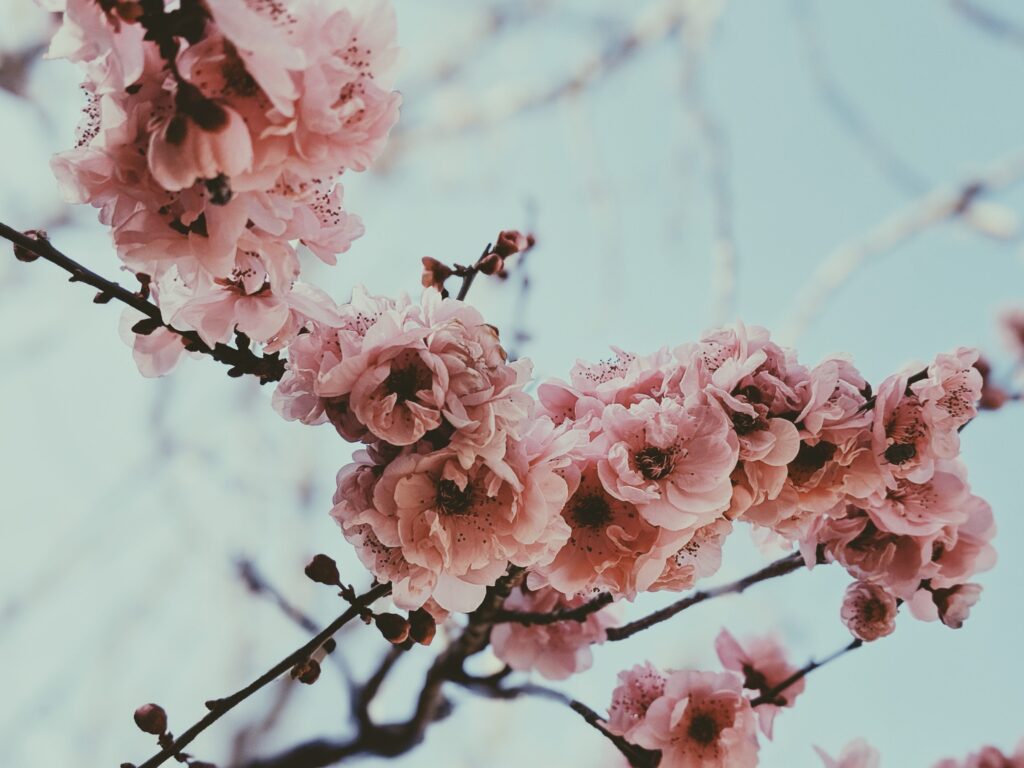
Succulents are a popular type of plant known for their ability to store water in their leaves, stems, and roots. They come in various shapes and sizes, ranging from tiny rosettes to large, tree-like structures. The size of a succulent is determined by several factors, including its growth potential and limitations.
We will explore the factors that affect the size of succulents. We will discuss how the growth potential of succulents is influenced by genetic factors, environmental conditions, and cultural practices. Additionally, we will examine the limitations that can restrict the size of succulents, such as nutrient availability, space constraints, and natural growth habits. Understanding these factors will help succulent enthusiasts to better care for their plants and achieve optimal growth and size.
- Succulent size can be influenced by factors such as genetics, environmental conditions, and care practices
- Genetic factors determine the inherent growth potential of a succulent, including its maximum size
- Environmental conditions, such as light, temperature, and humidity, can affect a succulent's growth rate and overall size
- Providing optimal care, including proper watering, fertilization, and potting, can help maximize a succulent's growth potential
- Limitations such as limited space, nutrient availability, and competition with other plants can also impact the size of a succulent
- Some succulents naturally have smaller growth habits, while others can grow quite large under optimal conditions
- Regular pruning and maintenance can help control the size of a succulent and prevent it from becoming too large for its space
- Understanding the specific needs and growth habits of different succulent species can help guide decisions on care and placement to optimize their size
- Frequently Asked Questions
Succulent size can be influenced by factors such as genetics, environmental conditions, and care practices
When it comes to succulent size, there are several factors that come into play. These factors can either enhance or limit the growth potential of these plants. Understanding these factors is essential for succulent enthusiasts who want to cultivate healthy and thriving plants.
Genetics
Genetics play a significant role in determining the size of succulents. Just like any other living organism, succulents inherit certain traits from their parent plants. These traits can impact the growth potential of the succulent, including its size, shape, and color.
Some succulent species naturally have a smaller growth habit, while others can grow to be quite large. It's important to research the inherent characteristics of the specific succulent species you are interested in, as this will give you an idea of its potential size.
Environmental Conditions
The environmental conditions in which a succulent is grown can greatly influence its size. Factors such as sunlight, temperature, humidity, and airflow all play a role in the growth and development of succulents.
 Succulents: Full Sun or Shade for Optimal Growth?
Succulents: Full Sun or Shade for Optimal Growth?Succulents generally thrive in bright, indirect sunlight. Insufficient light can hinder their growth, resulting in smaller and stretched-out plants. On the other hand, excessive exposure to intense sunlight can cause sunburn and stunted growth.
Temperature also plays a crucial role in succulent growth. Most succulents prefer warm temperatures, but they can vary in their tolerance for extreme heat or cold. It's important to provide the right temperature range for your succulent to ensure optimal growth.
Humidity and airflow are also essential considerations. Succulents generally prefer low humidity levels and good airflow to prevent issues like rot and fungal diseases. Proper ventilation and well-draining soil are crucial for maintaining the right environmental conditions for succulent growth.
Care Practices
The care practices implemented by succulent owners can significantly impact the size of their plants. Proper care includes watering, fertilizing, and potting techniques.
Overwatering is one of the most common mistakes made by succulent owners. Excessive moisture can lead to root rot and hinder the growth of succulents. On the other hand, underwatering can also stunt their growth. Finding the right balance and watering succulents only when the soil is dry is crucial for their size and overall health.
Fertilizing succulents sparingly with a balanced and diluted fertilizer can promote healthy growth. However, overfertilization can cause excessive foliage growth and lead to weak and leggy succulents.
The choice of potting medium and container size also plays a role in succulent size. A well-draining soil mix and an appropriately sized pot are essential for providing the right growing environment for the succulent roots.
 Succulents: Perennials or One-Season Wonders? Unveiling their Lifespan
Succulents: Perennials or One-Season Wonders? Unveiling their LifespanThe size of succulents is influenced by various factors, including genetics, environmental conditions, and care practices. By understanding these factors and providing the optimal conditions, succulent enthusiasts can help their plants reach their full growth potential.
Genetic factors determine the inherent growth potential of a succulent, including its maximum size
When it comes to succulent plants, their size and growth potential are largely influenced by genetic factors. These genetic factors determine the inherent characteristics of a succulent, including its maximum size.
Each succulent species has its own unique genetic makeup, which plays a significant role in determining its growth potential. Some succulents are naturally predisposed to grow larger, while others have genetic limitations that restrict their size.
For instance, certain succulents belonging to the Agave genus are known for their impressive size and can grow up to several feet tall and wide. This is due to their genetic makeup, which enables them to store more water and nutrients, resulting in larger overall growth.
On the other hand, succulents from the Echeveria genus are typically smaller in size. Their genetic limitations restrict their growth potential, and they tend to form compact rosettes with smaller leaves. Despite their smaller size, Echeverias are highly sought after for their intricate shapes and vibrant colors.
It's important to note that while genetic factors set the foundation for a succulent's growth potential, other environmental factors also come into play. Factors such as sunlight exposure, temperature, soil conditions, and water availability can either enhance or hinder a succulent's growth.
To maximize the growth potential of your succulent, it's crucial to provide it with the ideal environmental conditions that suit its genetic makeup. This includes ensuring it receives the right amount of sunlight, maintaining appropriate temperature levels, using well-draining soil, and watering it appropriately.
 Can Succulents Survive Prolonged Exposure to Direct Sunlight?
Can Succulents Survive Prolonged Exposure to Direct Sunlight?Genetic factors play a significant role in determining the inherent growth potential of a succulent, including its maximum size. Understanding the genetic characteristics of different succulent species can help you better care for and appreciate these unique and diverse plants.
Environmental conditions, such as light, temperature, and humidity, can affect a succulent's growth rate and overall size
When it comes to succulents, their growth potential and size are heavily influenced by various environmental factors. Understanding these factors can help you create an optimal environment for your succulents to thrive.
1. Light:
Light is one of the most crucial factors affecting succulent growth. Succulents require bright, indirect sunlight to grow properly. Insufficient light can result in etiolation, causing the plants to stretch and become weak. On the other hand, intense or prolonged exposure to direct sunlight can lead to sunburn and damage the succulents.
It's important to find the right balance by placing your succulents in a location where they can receive adequate sunlight without being exposed to harsh rays. Consider rotating your plants regularly to ensure even light distribution and prevent lopsided growth.
2. Temperature:
Succulents are known for their ability to adapt to various temperature conditions. However, extreme temperatures can affect their growth. Most succulents prefer warm climates with temperatures ranging between 60°F and 80°F (15°C and 27°C).
During winter, it's crucial to protect your succulents from freezing temperatures. If you live in a colder region, consider moving your plants indoors or providing them with adequate insulation to prevent cold damage.
 Succulent Size Exploration: Unveiling Their Maximum Growth Potential
Succulent Size Exploration: Unveiling Their Maximum Growth Potential3. Humidity:
Succulents are native to arid environments and are adapted to low humidity levels. High humidity can lead to issues such as fungal diseases and root rot. It's important to provide good airflow and avoid overwatering to maintain a suitable humidity level for your succulents.
Consider using well-draining soil and pots with drainage holes to prevent water from accumulating around the roots. Additionally, placing a small fan near your succulents can help improve air circulation and reduce excess humidity.
4. Watering:
Watering is a critical aspect of succulent care. Overwatering can lead to root rot, while underwatering can cause the plants to become dehydrated and stunted. Succulents have the ability to store water in their leaves, stems, and roots, allowing them to survive in drought-like conditions.
It's crucial to water your succulents thoroughly but infrequently. Allow the soil to dry out completely between waterings to prevent waterlogged conditions. Adjust your watering schedule based on factors such as the season, temperature, and humidity levels.
5. Nutrients:
Succulents have specific nutrient requirements for optimal growth. While they can survive in nutrient-poor soils, providing them with a balanced fertilizer can promote healthier growth and larger size. Use a well-balanced fertilizer specifically formulated for succulents and follow the recommended dosage instructions.
It's important to note that over-fertilizing can lead to salt build-up in the soil, causing root damage. Always follow the guidelines and avoid applying fertilizer to dry soil.
By considering these factors and providing suitable conditions, you can help your succulents reach their full growth potential and achieve impressive sizes. Remember to monitor your plants regularly and make adjustments as needed to ensure their continued health and vitality.
 Optimal Growth of Succulents: Sun or Shade Preference?
Optimal Growth of Succulents: Sun or Shade Preference?Providing optimal care, including proper watering, fertilization, and potting, can help maximize a succulent's growth potential
When it comes to keeping succulents, understanding the factors that influence their size is essential. By providing optimal care, including proper watering, fertilization, and potting, you can help maximize a succulent's growth potential.
Watering
Watering is a crucial aspect of succulent care. These plants are adapted to survive in arid conditions, so overwatering can be detrimental to their growth. It's important to strike a balance and avoid both underwatering and overwatering.
Underwatering can stunt a succulent's growth and lead to shriveled leaves. On the other hand, overwatering can cause root rot and fungal infections, hindering the plant's growth. To promote healthy growth, water your succulents sparingly, allowing the soil to dry out completely between waterings.
Fertilization
Proper fertilization can also contribute to a succulent's growth potential. While these plants can survive in nutrient-poor soil, providing them with a balanced fertilizer can help enhance their growth. However, it's important not to go overboard with fertilization.
Using a diluted succulent-specific fertilizer during the growing season, typically in spring and summer, can provide the necessary nutrients without overwhelming the plant. Avoid fertilizing during the dormant period, as succulents generally require less nutrition during this time.
Potting
The choice of pot and potting mix can impact a succulent's growth potential as well. Succulents prefer well-draining soil to prevent waterlogging, which can hinder their growth. Opt for a pot with drainage holes to allow excess water to escape.
 Expert Guide: Cultivating Succulents at Home
Expert Guide: Cultivating Succulents at HomeAdditionally, using a well-draining potting mix specially formulated for succulents or adding perlite or pumice to regular potting soil can promote optimal growth. This ensures that water drains quickly, preventing the roots from sitting in damp conditions that could lead to rot.
To maximize the growth potential of your succulents, it is crucial to provide them with the right care. Proper watering, fertilization, and potting techniques will help create an ideal environment for these plants to thrive and reach their full size.
Limitations such as limited space, nutrient availability, and competition with other plants can also impact the size of a succulent
When it comes to the size of a succulent, several factors can play a role in determining its growth potential and limitations. One of the key limitations that can affect the size of a succulent is limited space.
Succulents generally have a shallow root system, which means they require ample space for their roots to spread out and establish themselves. If a succulent is planted in a small pot or confined to a limited area, its growth can be hindered. The lack of space restricts the root development, which in turn affects the overall size of the plant.
Another factor that can impact the size of a succulent is nutrient availability. Succulents require specific nutrients, such as nitrogen, phosphorus, and potassium, to support their growth and development. If the soil or growing medium lacks these essential nutrients, the succulent may not be able to reach its full growth potential. Inadequate nutrient availability can result in stunted growth and smaller overall size.
Competition with other plants is another limitation that can affect the size of a succulent. When succulents are grown alongside other plants, they have to compete for resources such as sunlight, water, and nutrients. If the succulent is overshadowed by taller plants or if its access to resources is limited due to competition, its growth can be constrained.
 Do Succulents Require Full Sun for Optimal Growth and Health?
Do Succulents Require Full Sun for Optimal Growth and Health?Additionally, environmental factors such as temperature, humidity, and light intensity can also impact the size of a succulent. Some succulents thrive in warm and dry climates, while others prefer cooler and more humid conditions. If the environmental conditions are not suitable for the specific succulent species, it may not grow to its full potential.
There are various limitations that can affect the size of a succulent. Limited space, nutrient availability, competition with other plants, and environmental factors all play a role in determining the growth potential and overall size of a succulent. By understanding these factors, succulent enthusiasts can create optimal conditions for their plants and help them reach their maximum size.
Some succulents naturally have smaller growth habits, while others can grow quite large under optimal conditions
Factors Affecting Succulent Size: Growth Potential & Limitations
When it comes to succulents, their size can vary significantly. Some succulents naturally have smaller growth habits, while others can grow quite large under optimal conditions. Understanding the factors that affect succulent size can help you create the ideal environment for your plants and ensure their healthy growth.
1. Genetics
Just like with any living organism, genetics play a significant role in determining the size of succulents. Each succulent species has its own growth potential encoded in its DNA. Some species are genetically predisposed to stay small and compact, while others have the genetic potential to become larger plants.
 Understanding the Lowest Tolerance Temperature for Succulents
Understanding the Lowest Tolerance Temperature for Succulents2. Environmental Factors
The environment in which succulents are grown greatly influences their size. Factors such as light, temperature, humidity, and air circulation can impact how succulents develop. Providing the appropriate conditions for your succulents will promote their growth potential.
2.1 Light:
Succulents are known for their love of bright light. Insufficient light can cause succulents to become leggy and stretched out. On the other hand, excessive light exposure can lead to sunburn and discoloration. Finding the right balance and providing adequate light for your succulents is crucial for their proper growth.
2.2 Temperature:
Succulents generally thrive in warmer temperatures. However, extreme heat or cold can negatively impact their growth. It is important to keep your succulents within their preferred temperature range to maximize their growth potential.
2.3 Humidity:
 Choosing the Right Light for Succulents: A Guide to Optimal Growth
Choosing the Right Light for Succulents: A Guide to Optimal GrowthSucculents are adapted to survive in arid environments, and excessive humidity can cause issues such as rot and fungal diseases. Maintaining proper air circulation and avoiding excessive moisture is essential for preventing size limitations in succulents.
3. Nutrient Availability
The availability of nutrients in the soil directly affects succulent growth. Succulents have specific nutrient requirements, and an imbalanced nutrient composition can hinder their growth potential. Ensuring that your succulents receive the necessary nutrients through appropriate fertilization and soil composition will contribute to their size and overall health.
4. Container Size
The size of the container in which succulents are planted can also impact their growth. A small container restricts the expansion of the root system, which can limit the overall size of the plant. Providing adequate room for the roots to grow allows the succulent to reach its full growth potential.
By understanding these factors affecting succulent size, you can create an environment that promotes healthy growth and helps your succulents reach their full potential. Remember to tailor your care routine to the specific needs of your succulent species, providing them with the necessary light, temperature, humidity, nutrients, and space to thrive.
Regular pruning and maintenance can help control the size of a succulent and prevent it from becoming too large for its space
When it comes to succulents, their size can vary greatly depending on various factors. One of the key factors that affect the size of a succulent is its growth potential and limitations. Understanding these factors can help you properly care for your succulent and ensure it thrives in its environment.
 Drought-Tolerant Cacti & Succulents: Discover Low-Water Plants
Drought-Tolerant Cacti & Succulents: Discover Low-Water PlantsGrowth Potential
Each succulent has its own unique growth potential, which is determined by its genetic makeup. Some succulents naturally have a slower growth rate and remain small, while others have a faster growth rate and can reach significant sizes. It is important to research and understand the growth potential of your specific succulent so you can provide it with the appropriate care.
Factors that contribute to a succulent's growth potential include:
- Light: Succulents require adequate sunlight to grow. Insufficient light can stunt their growth, while too much direct sunlight can cause burns and damage. Finding the right balance of light for your succulent is crucial for its growth potential.
- Water: Overwatering or underwatering can impact a succulent's growth. It is important to water your succulent appropriately, allowing the soil to dry out between waterings. This helps stimulate healthy growth and prevents root rot.
- Nutrients: Succulents require certain nutrients to grow and thrive. Providing them with a well-balanced fertilizer can support their growth potential. However, be cautious not to over-fertilize, as this can lead to excessive growth that may not be sustainable for the plant.
Limitations
While succulents have the potential to grow to a certain size, they also have limitations that restrict their growth. These limitations can be influenced by external factors and the plant's natural characteristics.
Some limitations that affect succulent size include:
- Root Space: Succulents have limited root space, especially when grown in containers. As they grow, their root system can become overcrowded, restricting further growth. Repotting your succulent into a larger container can provide it with more room to grow and prevent stunted growth.
- Genetics: The genetic makeup of a succulent plays a significant role in determining its ultimate size. Some succulents are naturally predisposed to remain small, while others have the genetic potential to grow larger. It is important to choose the right type of succulent for your space, considering its ultimate size.
- Environmental Conditions: Environmental factors such as temperature, humidity, and airflow can impact succulent growth. Extreme conditions can hinder growth or cause damage to the plant. Providing a suitable environment with optimal conditions for your succulent can help promote healthy growth.
Regular pruning and maintenance can also help control the size of a succulent and prevent it from becoming too large for its space. Trimming back overgrown stems and removing dead leaves can encourage new growth and maintain a compact form.
Understanding the growth potential and limitations of succulents is crucial for their care. By providing the right conditions, nutrients, and maintenance, you can help your succulent reach its full growth potential while ensuring it remains a suitable size for its environment.
Understanding the specific needs and growth habits of different succulent species can help guide decisions on care and placement to optimize their size
When it comes to succulents, their size can vary greatly depending on several factors. Understanding these factors is crucial for ensuring optimal growth and maintaining healthy succulents. In this article, we will explore the factors that affect succulent size, including growth potential and limitations.
Growth Potential
Each succulent species has its own inherent growth potential. Some succulents naturally grow larger and faster, while others have a slower growth rate and remain relatively small. It is essential to research and understand the growth potential of the specific succulent species you have or plan to acquire.
Factors that influence growth potential include:
- Genetics: The genetic makeup of a succulent plays a significant role in determining how large it can grow. Some succulents are naturally inclined to reach impressive sizes, while others are genetically predisposed to remain compact.
- Species: Different succulent species have varying growth habits. Some species, like Aloe vera, have a tendency to grow tall and develop multiple stems, while others, such as Haworthia, form rosettes and stay relatively small.
- Age: Succulents generally grow more slowly as they age. Younger succulents often have a higher growth potential compared to mature plants.
- Environmental Conditions: The environment in which a succulent is grown significantly impacts its growth potential. Factors such as sunlight exposure, temperature, humidity, and soil quality can either promote or hinder growth.
Limitations
While succulents have the potential to grow to impressive sizes, they are also subjected to certain limitations that can affect their growth:
- Container Size: The size of the container in which a succulent is planted can limit its growth. Succulents need sufficient space for their roots to spread and absorb nutrients. If the container is too small, it can restrict root growth and ultimately limit the size of the succulent.
- Root Bound: When a succulent becomes root-bound, its growth can be stunted. Root-bound occurs when the roots outgrow their container and become tightly packed. This can inhibit nutrient uptake and hinder overall growth.
- Overcrowding: Planting multiple succulents in close proximity can lead to overcrowding. As succulents compete for resources like sunlight and nutrients, their growth can be limited. Adequate spacing is essential to allow each succulent to reach its full potential.
- Pests and Diseases: Succulents are susceptible to pests and diseases that can hinder their growth. Insect infestations, fungal infections, or viral diseases can weaken succulents and impede their ability to grow to their full size.
By understanding the growth potential and limitations of succulents, you can make informed decisions regarding their care and placement. Providing the optimal environment and addressing any potential limitations can help your succulents thrive and reach their maximum size.
Frequently Asked Questions
1. What are some factors that affect the size of succulents?
Factors such as genetics, available light, temperature, water, and nutrients can all impact the size of succulents.
2. Can succulents grow bigger if they receive more sunlight?
Yes, succulents generally need plenty of sunlight to grow to their full potential. Insufficient light can lead to stunted growth.
3. Do succulents have a maximum size they can reach?
Yes, succulents have a growth limit determined by their genetic potential and the available resources. Some species naturally grow larger than others.
4. How often should I water my succulents to promote optimal growth?
Succulents should be watered infrequently but deeply, allowing the soil to dry out completely between waterings. Overwatering can hinder growth and lead to root rot.
If you want to read more articles similar to Factors Affecting Succulent Size: Growth Potential & Limitations, you can visit the Growing Conditions category.

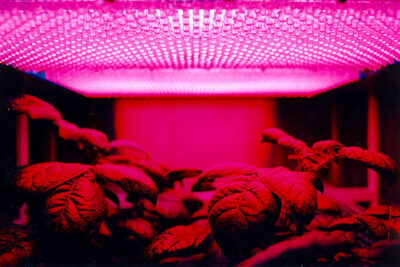
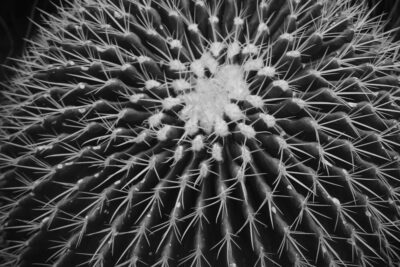
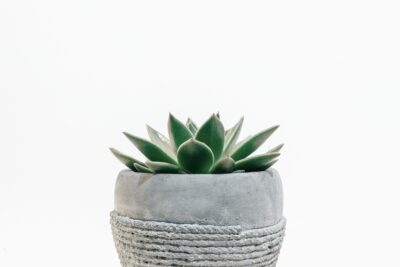
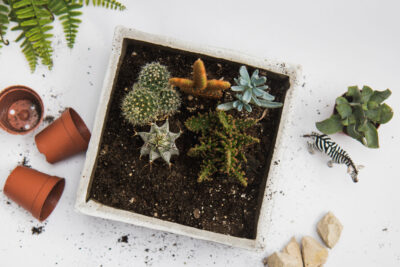

You Must Read